Description: This deciduous tree is 60-120' tall at maturity. It develops a single stout trunk up to 4-6' across and forms an ovoid crown in open situations. The trunk bark of mature trees is thick, gray, and coarsely ridged. The abundant branches are ascending above and drooping below; they are somewhat crooked and knobby. Branch bark is light gray to gray-brown and fairly smooth. Alternate leaves are 4-5" long and 3-4" across; they are deltate-ovate in shape and crenate-dentate along their margins. The teeth of the leaves are slightly hooked. Individual leaves have flat bottoms and slender tips. The upper leaf surfaces are medium green and glabrous, while their lower surfaces are pale green, hairless, and dull. Leaf venation is pinnate. The slender petioles are nearly as long as the leaf blades; they are light green, glabrous, and somewhat flattened. Eastern Cottonwood is dioecious; individual trees produce either all male (staminate) flowers or all female (pistillate) flowers. These flowers are produced during the spring before the leaves develop in the form of drooping catkins about 2-3" long.
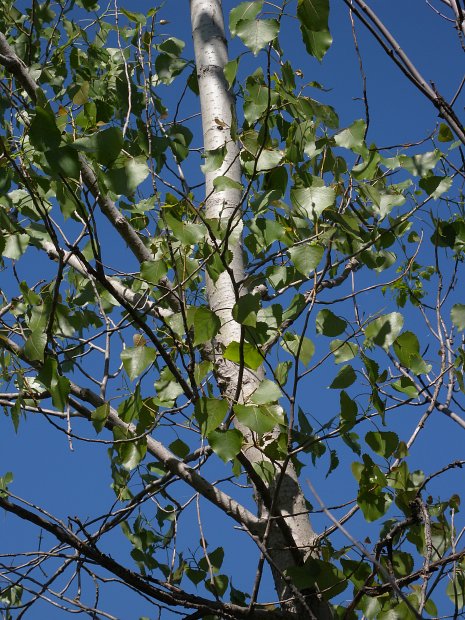
Male catkins occur in clusters of 2-4 near the tips of branches, while female catkins are produced individually. Each male catkin is bright red or yellow and cylindrical in shape, consisting of a dense mass of nearly sessile male florets. Each male floret consists of a dish-shaped basal disk and 20-60 reddish or yellowish stamens. At the base of each male floret, there is a fringed bract. Each female catkin is green and cylindrical in shape, consisting of many female florets on slender petioles (see photo of Female Catkin). Each female floret consists of a dish-shaped basal disk and a single ovoid pistil about 8 mm. (1/3") long. Each pistil has 3-4 flattened stigmata with undulate margins. At the base of each female floret, there is a fringed bract. The florets are wind-pollinated. Afterwards, the male catkins wither away, while the female catkins elongate to 4-6" in length while developing their fruits. During early to mid-summer, these fruits split open to release their seeds. Each fruit releases about 30-50 seeds with cottony hairs. The seeds are distributed by the wind and can travel several hundred feet in the air. They also float on water and can travel downstream. Individual seeds are about 2 mm. long. The woody root system is shallow and branching. This tree reproduces by reseeding itself.
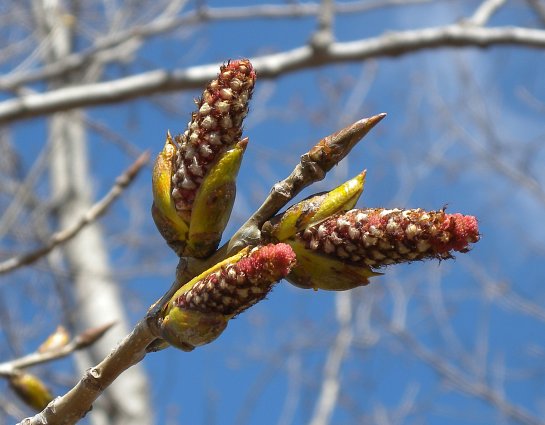
Cultivation: The preference is full sunlight, moist conditions, and soil consisting of sandy loam or silty loam. Growth and development of young trees is quite fast. However, mature trees are usually short-lived (100 years or less). Temporary flooding during the spring is tolerated. Because the wood of the branches is rather soft and brittle, this tree is vulnerable to storm and ice damage. For female trees, the cottony hairs of the seeds may be released in such numbers that they can clog gutters and the filters of air conditioners. Because the spreading roots wander in search of water, individual trees should not be planted near sewers or water pipes.
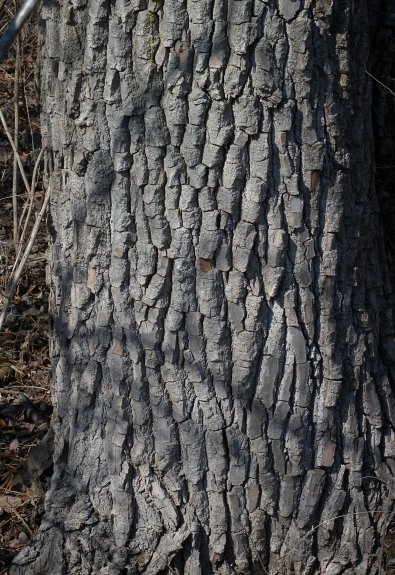
Range & Habitat: The native Eastern Cottonwood is a common tree that is probably found in every county of Illinois (see Distribution Map). Habitats consist of bottomland deciduous woodlands, banks of rivers and lakes, banks of mine spoil, picnic and camping grounds near sources of water, and sand dunes near Lake Michigan. Sometimes Eastern Cottonwood is cultivated as a landscape tree in yards. It frequently colonizes disturbed open areas that are moist. In bottomland woodlands, common associates are Black Willow, Green Ash, Slippery Elm, Silver Maple, and River Birch. There is a subspecies, Populus deltoides occidentalis (Western Cottonwood), that is found along rivers in the Great Plains region. It has smaller leaves with larger teeth than the typical eastern subspecies.
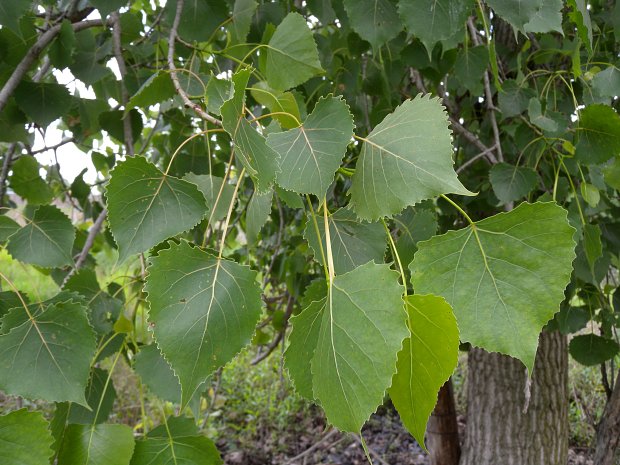
Faunal Associations: Insects that feed on Eastern Cottonwood and other poplar trees (Populus spp.) include larvae of metallic wood-boring beetles, larvae of long-horned beetles, leaf beetles, weevils, larvae of leaf-miner flies, plant bugs, aphids, armored scales, mealybugs, larvae of sawflies, larvae of Geometer moths, larvae of leaf blotch miner moths (Gracillariidae), larvae of owlet moths, larvae of prominent moths (Notodontidae), larvae of clear-winged moths (Sesiidae), larvae of Sphinx moths, larvae of Tortrix moths, larvae of brush-footed butterflies (Limenitis spp., Nymphalis spp.), and larvae of a skipper, the Dreamy Duskywing (Erynnis icelus). The Beetle Table, Aphid Table, and Moth Table provide more information about these species. Insects that have been observed to feed on Eastern Cottonwood include larvae of the Flat-headed Poplar Borer (Dicerca tenebrica), Poplar Vagabond Gall Aphid (Mordvilkoja vagabunda), Long-lobed Scurfy Scale (Chionaspis longiloba), larvae of the Cottonwood Twig Borer Moth (Gypsonoma haimbachiana), and larvae of a butterfly, the Viceroy (Limenitis archippus). Among vertebrate animals, some bird species feed on various parts of the Eastern Cottonwood; these species include the Evening Grosbeak (buds), Purple Finch (buds), White-winged Crossbill (seeds), Ruffed Grouse (buds, catkins), and Yellow-bellied Sapsucker (sap of young trees); see DeGraaf (2002), DeVore et al. (2004). Some birds also select the Eastern Cottonwood for their nest sites; this include the Red-shouldered Hawk, Red-bellied Woodpecker, Red-headed Woodpecker, and Yellow-bellied Sapsucker (Dijak et al., 1990; Moorman & Chapman, 1996; Jackson, 1976; DeGraaf, 2002).
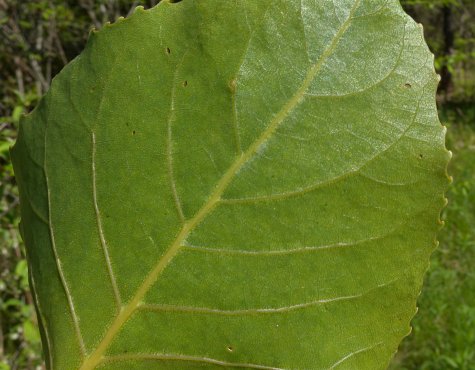
Some mammals also use cottonwood, poplar, and aspen trees (Populus spp.) as a source of food. These species include the American Beaver (wood, bark), American Moose (foliage, twigs), White-tailed Deer (foliage, twigs), North American Porcupine (wood, bark), Prairie Vole (bark of saplings), and Meadow Vole (bark of saplings); see Martin et al. (1951/1961). Floating seeds that fall on water are eaten by a turtle, the Smooth Softshell (Apalone mutica); see Ernest et al. (1994). Another group of mammals that use these trees are bats; the cavities, loose bark, foliage, and branches are used as summer roost sites. Bats that have been observed to use Eastern Cottonwood for this purpose include Rafinesque's Big-eared Bat (Corynorhinus rafinesquii), Big Brown Bat (Eptesicus fuscus), Silver-haired Bat (Lasionycteris noctivagans), Hoary Bat (Lasiurus cinereus), Little Brown Bat (Myotis lucifugus), Northern Long-eared Bat (Myotis septentrionalis), Indiana Bat (Myotis sodalis), Evening Bat (Nycticeius humeralis), and Tricolored Bat (Perimyotis subflavus); see Martin et al. (2011), Swier (2003), McGuire et al. (2012), Sparks et al. (2005), Zimmerman (2015), Carter (2003), MuÌnzer (2008), and Veilleux et al. (2003).
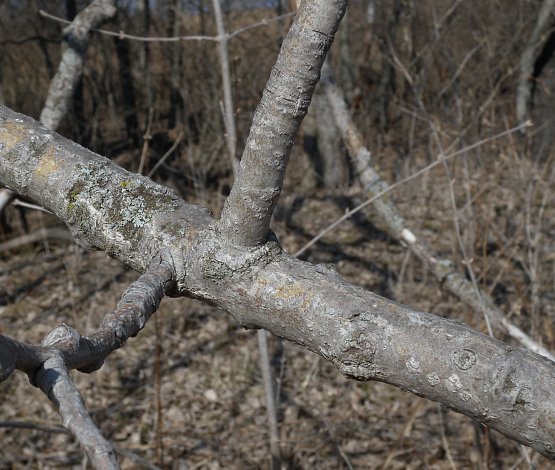
Photographic Location: Meadowbrook Park and Judge Webber Park in Urbana, Illinois, and a degraded savanna near the Maumee River in NW Ohio.
Comments: Eastern Cottonwood develops very quickly into a rather coarse and robust tree. Its shiny leaves glitter in the sunlight, and they make a conspicuous flapping sound in the wind that can be construed as either relaxing or annoying. This tree can be distinguished from its relatives from the deltate shape of its leaves, which have bottoms that are more or less flat. The narrowly rounded teeth of its leaves are somewhat unusual because they are slightly hooked, and it has flattened petioles, unlike some Populus spp. Trees that are referred to as 'poplars,' 'aspens,' and 'cottonwoods' are members of the same genus and closely related to each other.